Dream-Flight Ahi 1.2m
£155.86 Original price was: £155.86.£95.99Current price is: £95.99.
- Easy, Fast Returns Guarantee
- Your needs, our top priority.
- Protect Your Wallet with Safe Payments
- Quality products for every lifestyle.

The Dream Flight Ahi‘s purposeful layout and shape make for a fully capable aerobatic sloper with a groovy pattern-like feel and precision, allowing you to efficiently connect manoeuvres in less lift. Carefully proportioned and balanced control surfaces provide predictable, yet aggressive control authority.
Kit Features
- “ARG” Almost Ready to Glide – Interlocking design uses rare earth magnets
- Wide flight envelope for smooth and predictable gliding or highly inspired freestyle aerobatics
- Precision-molded EPO foam and composite parts ensure a lightweight and durable airframe
- All pushrods and clevises, for connecting the servos to the control surfaces are included
- Highly efficient and nimble DreamFlight design makes the most out of light wind conditions
- Carbon fibre canopy is held magnetically for easy access to radio compartment
- Ballast compartment – quickly adapt to varying wind conditions
- Laser-cut plywood servo tray and battery hold-down
- Integrated landing skid for those rougher touch downs
- Designed to inspire!
Items Required for Completion:
Transmitter with programmable flaperon mixing and adjustable dual rates/EPA
Micro receiver (we use the Futaba R2106GF)
4 durable micro servos
Receiver battery: 4.8V 650mAh 2/3AA NiMH
Small tools, Blenderm tape or adhesive
Steel Balance/Ballast Weights
There is no need to buy Dreamflight control horns or accessories. All control horns, pushrods, etc are included in the very complete kit. The foam is all white so if some contrasting colour is required please use Dream-Flight colour trim sheets.
Lots more info on the RCGroups Ahi thread. Also checkout the videos in this RCGroups Ahi Videos thread. Thanks to Pierre Rondel for use of his great photos and video. This post about glue is very informative.
| Dream-Flight Ahi Specifications | ||
|---|---|---|
| Wing span | 1.2 m | 47 in |
| Wing area | 20.5 dm2 | 318 sq in |
| Length | 81 cm | 32.0 in |
| Flying weight from | 342 g | 12.1 oz |
| Wing loading | 16.7 g/dm | 5.5 oz/sq ft |
| Aspect ratio | 7.0 | |
| Wing airfoil | Proprietary | |
| Dihedral angle | 0º | |
| Centre of Gravity | TBA mm from wing leading edge | |
| Controls | Rudder, elevator, ailerons | |
| Dream-Flight Ahi Typical Weights | ||
|---|---|---|
| Total structure | 230 g | 8.1 oz |
| Receiver | 8 g | 0.3 oz |
| Tail servos (2) | 22 g | 0.8 oz |
| Wing servos (2) | 22 g | 0.8 oz |
| Battery | 60 g | 2.1 oz |
| Noseweight | 20 g | 0.7 oz |
| Flying weight | 342 g | 12.1 oz |
| Recommended R/C | |
|---|---|
| All servos (4) | Dream-Flight 12.4g, Blue Bird BMS-125WV, Blue Bird BMS-126WV, Blue Bird BMS-127WV, MKS DS6100, MKS HV6100, MKS DS75K, Ripmax SD150, KST X08 |
| Receiver (max size 60x25x15 mm) | 4+ channel rx to suit your transmitter, eg Spektrum AR6610T, AR6100e, Futaba R2106GF, FrSky X4R, Orange DSM2 compatible, Jeti Duplex R5, Multiplex Mlink RX-6-DR Light |
| Battery (max size 66x40x15 mm) | HyperFlight 650 mAh 4.8V NiMH, Overlander 2S 1000mAh LiPo |
Note the model is designed around the Dream-Flight 12.4 g Digital Metal Gear servo and this is recommended as it will fit without any modification to the foam structure. However other servos can be fitted easily by the more experienced modeller. If fitting a LiPo battery make sure the servos can operate at this voltage – the Dream Flight servos can’t.
See below a great write-up and video by Steve “Surfimp” Lange
HOLY ####
My first impressions of the Ahi are really positive. Had it out to Ellwood after work and was fortunate to get some decent-to-good lift (didn’t measure but I estimate 9-12mph steady), and just slightly off-center. Typical afternoon conditions, the compression built up in the bowls nicely and really let me put the plane through its paces.
I carefully followed the instructions while building and think they’ll give an outstanding result to anyone. Using the recommended 12g servos and battery from Dream-Flight, the plane needed zero noseweight to balance at a reasonable place (nice eh?). I am experimenting with the CG and am definitely liking it more and more the further I push it back, I’m currently about 4-5mm in front of the main spar and it feels pretty good there. Recommend that you just follow the directions as far as CG goes, start with something a little more forward and work your way back if you feel like it. The instructions have great info on dialing in your CG.
Performance was excellent, despite the small size and light weight it had absolutely no trouble penetrating, carried excellent speed, had a very fast and axial roll, excellent rudder and elevator authority, and overall was just a joy to fly. It felt very familiar – very much in the same vein as all the best slope aerobats I’ve flown in the past 15+ years – but at the same time had its own unique personality.
It presents like a much bigger plane, more like a 1.5m plane than the little 1.2m it actually is. Balanced at the neutral point recommended in the instructions, it will require very little forward stick while inverted, and will fly as precisely as any of the composite/molded dedicated slope aerobats I’ve flown over the years (i.e. Voltij, Wasabi, etc.), assuming the pilot so desires and is capable. It will also allow you to do the type of shenanigans seen in my Le Fish ultrabatics videos.
The semi-symmetrical airfoil is slightly noticeable (meaning: the inverted performance is just a hair different than the upright), but make no mistake: this is a full-on, 100% capable aerobatics glider. You can do multiple outside loops with no problem, and chain continuous upright & inverted figures together easily. One cool thing about the airfoil is that it makes the inverted spin and snaprolls REALLY GOOD. You can do an inverted/negative-G snaproll in the blink of an eye, it’s extremely axial, and recovers as soon as you release the sticks. Looks wild as heck but is easy to pull off and if you flub it, the light weight will almost certainly help you to recover and get going again well before you crash.
Knife edge performance is very good, comparable to a Le Fish, Wasabi or Voltij. To get a long knife edge pass, pick up speed, roll on your side and then feed in as little rudder as possible, just enough to keep the nose at or slightly above the horizon. You should be able to do a nice (for a slope glider, heh) knife pass for a reasonable distance. You can also use the rudder to hang the plane on its side, into the wind, and do the whole “slide down the firepole” thing . In short, side area and rudder effectiveness are very good, completely appropriate for this style of flying.
The plane definitely likes to have a bit of rudder coordination in its turns. You don’t have to do this, but it helps clean it up. Not hard at all, in fact, the feedback you get is so immediate and obvious that I think this will be an excellent plane to learn how to use rudder with. Don’t be put off by this – learning to coordinate your turns is step 1 to learning how to use the rudder to do all sorts of awesome aerobatics. That’s why you want an aerobatics plane, right?
It’s very lightweight, so most “oops” type situations can be corrected just by neutralizing the sticks for a moment. This will quickly bring the plane out of whatever weird attitude you’ve managed to get it in, and give you (hopefully) ample opportunity to recover. The plane is light enough and tough enough that the few pancake landings / crashes I’ve had, have resulted in zero damage. It’s EPO, so it’s not indestructible by any means, but it’s in that sweet spot of being fast but not so heavy that it can hurt itself too easily. Obviously, you mileage will vary, but I am a very “throw caution to the wind” kind of pilot and go for all kinds of low passes and am not afraid to crash. The plane seems to be handling that very well so far.
Summary
This is the plane I’ve been dreaming of having on the market for years; it’s the plane that the slope aerobatics niche has needed for 10+ years.
The Ahi flies great, does (almost) every trick in the book, is forgiving, and super easy to assemble. It looks cool, can go fast, can go slow, can be flown precise or wild. It’s approachable for a pilot who has never flown an aerobatics glider before, and will satisfy even the most expert pilot with its performance. It’s easily replaceable if it gets S.L.O.P.E.-ed, and will be readily available (unlike some of the more esoteric designs out there that are often homebrew only).
If you are even remotely interested in slope aerobatics, or just looking for a tremendously capable and fun sloper, the Ahi is your jam. Get one.
Be the first to review “Dream-Flight Ahi 1.2m” Cancel reply
Related products
Electric F5J Gliders
F3-RES Thermal Gliders
Electric F5J Gliders
Electric F5J Gliders
F3-RES Thermal Gliders
Pylon Racers
Electric F5J Gliders
RC Models


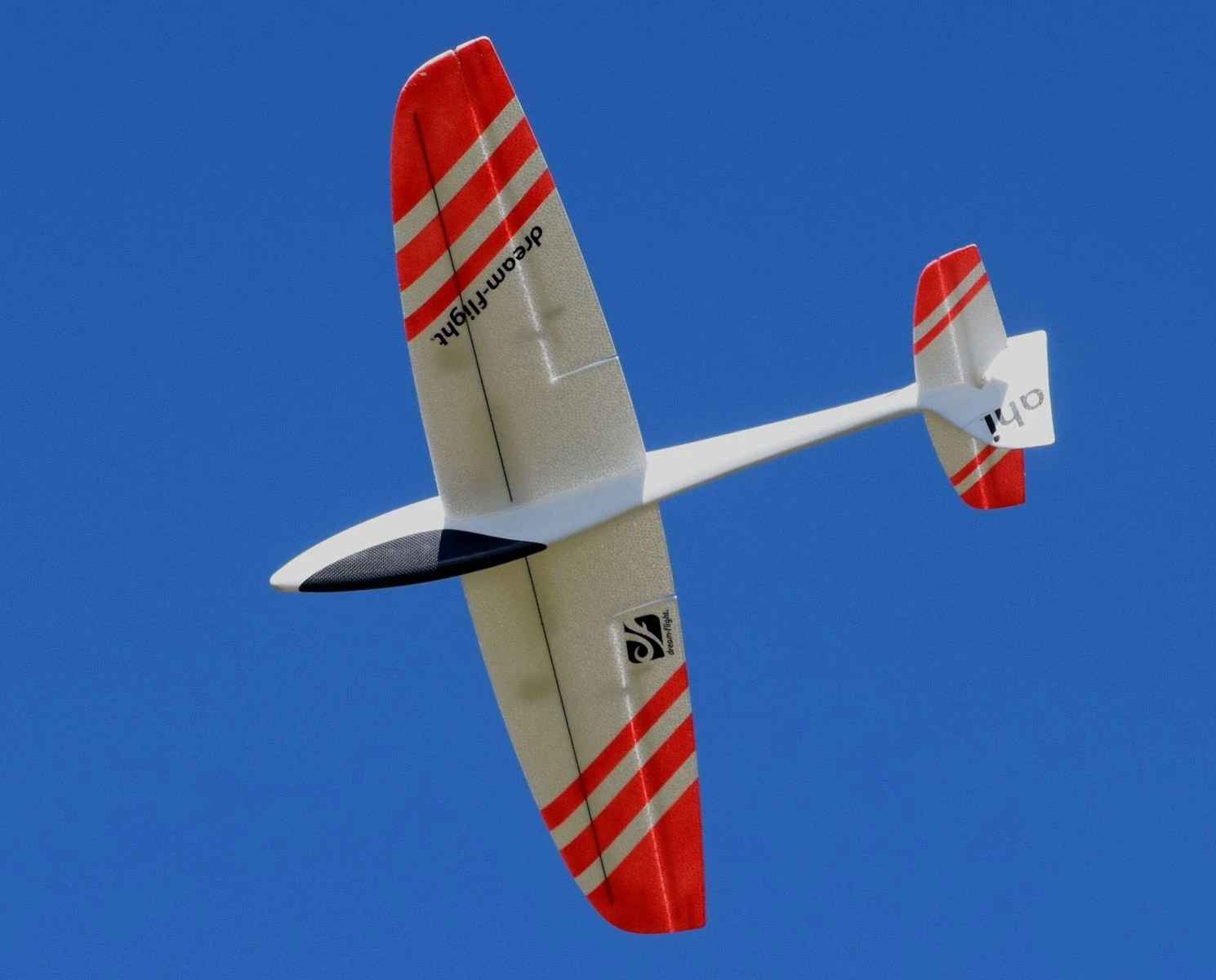

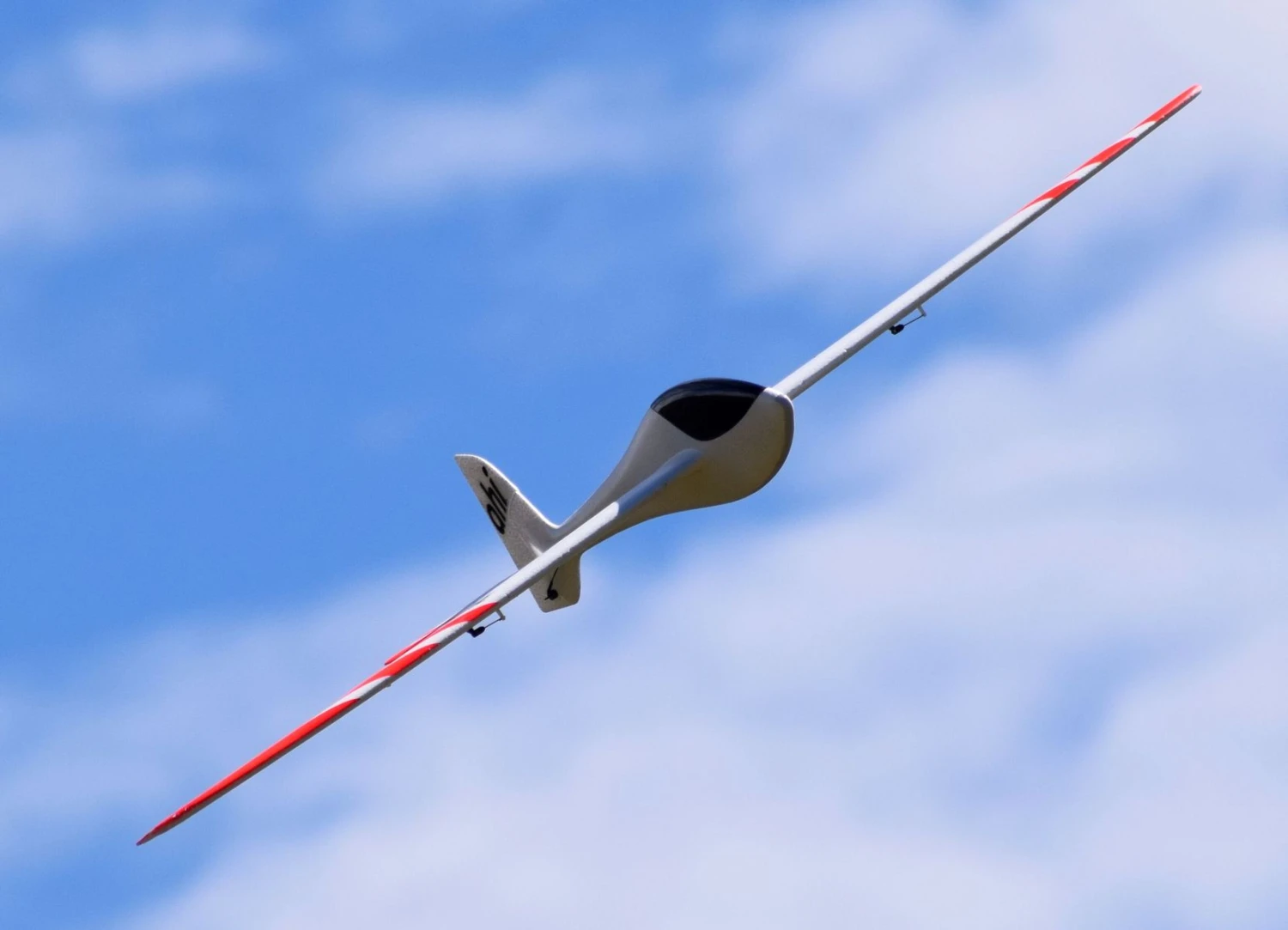


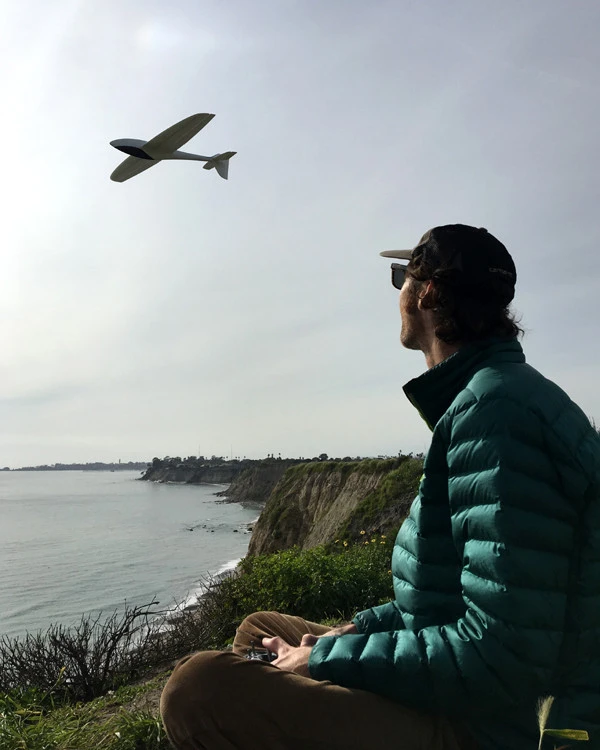
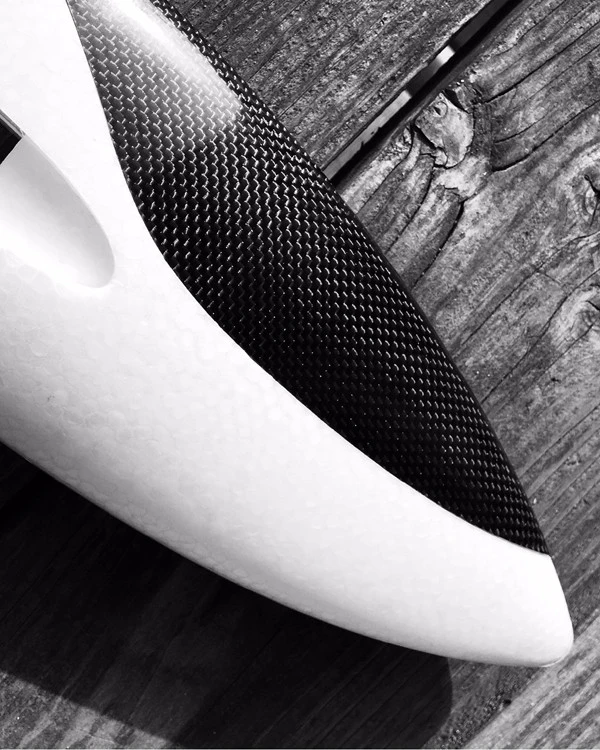

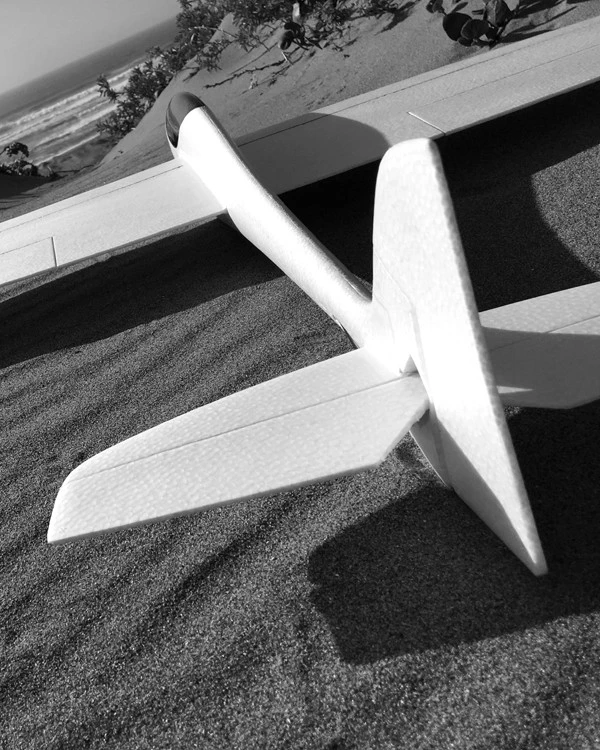




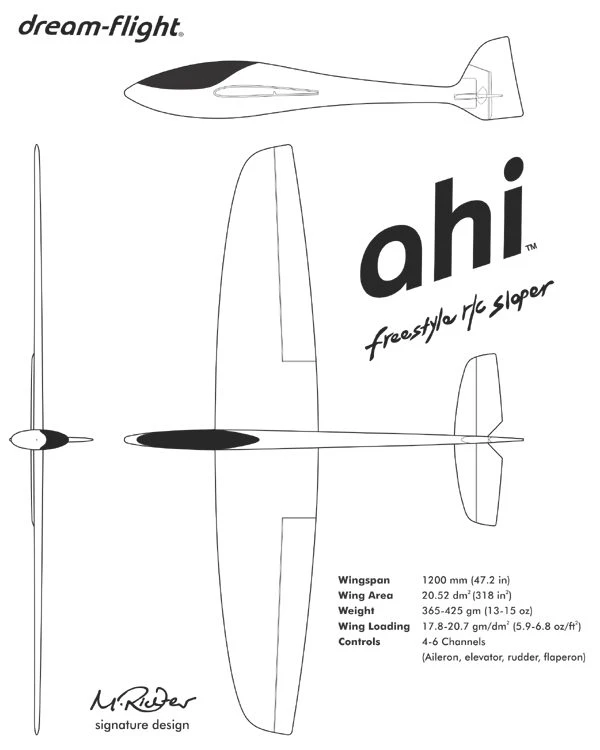
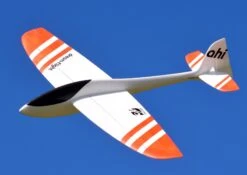
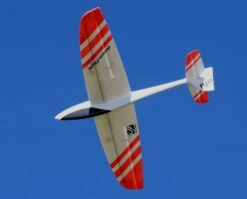

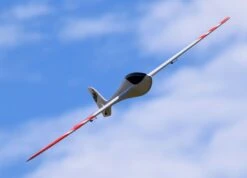
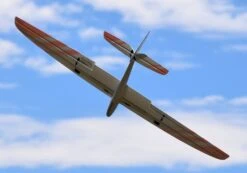

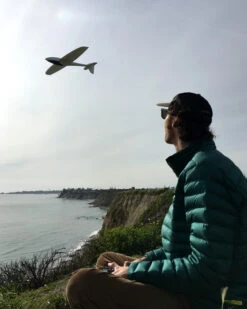


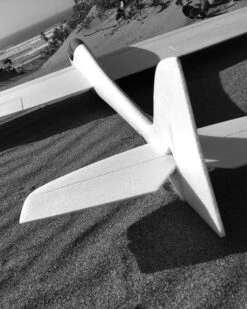


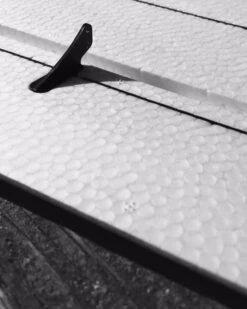

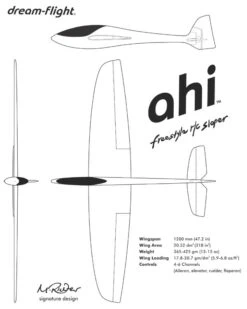

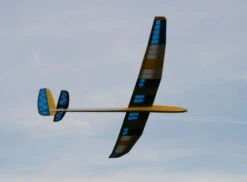

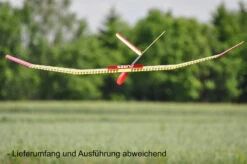






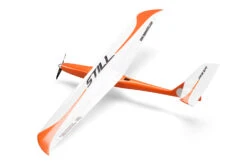
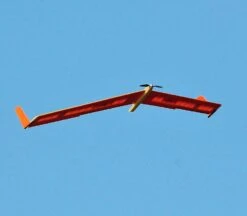

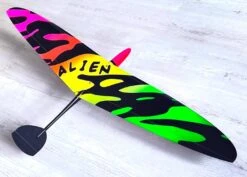
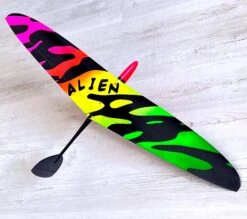
Reviews
There are no reviews yet.